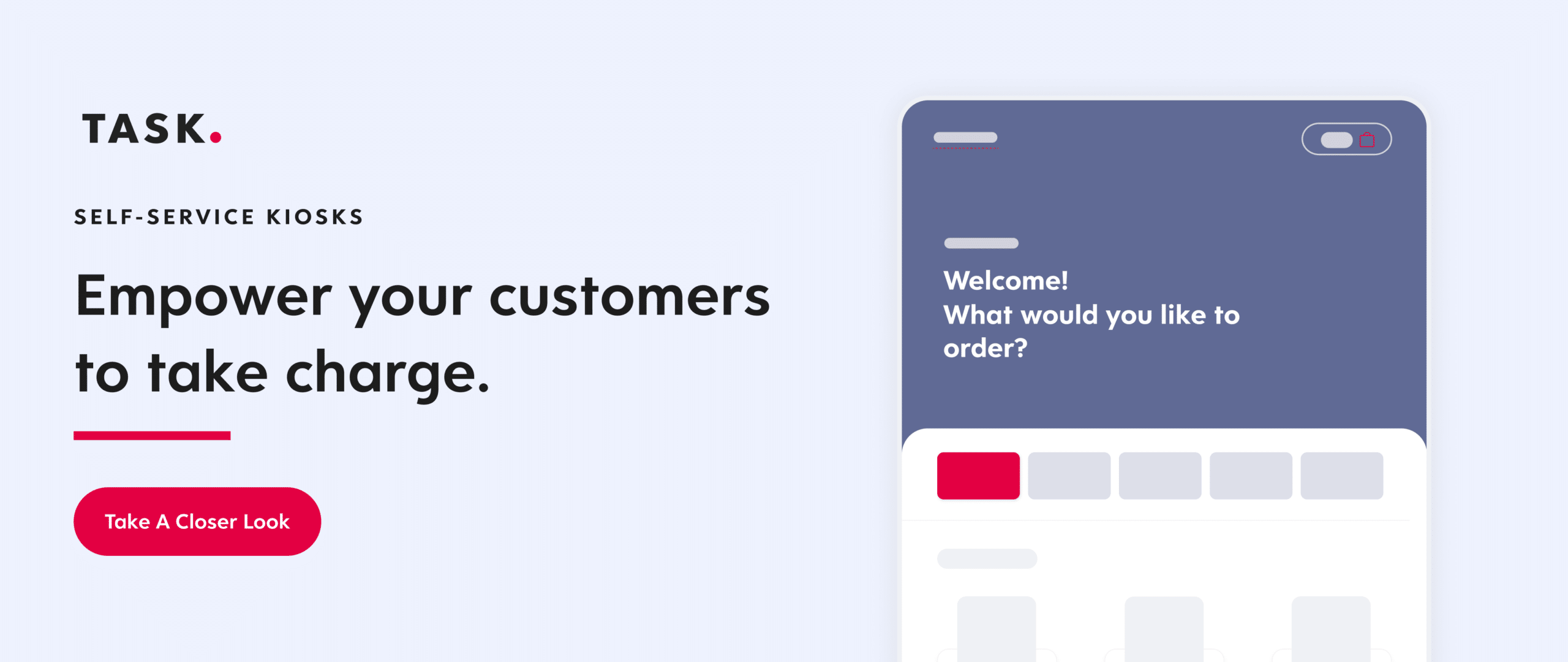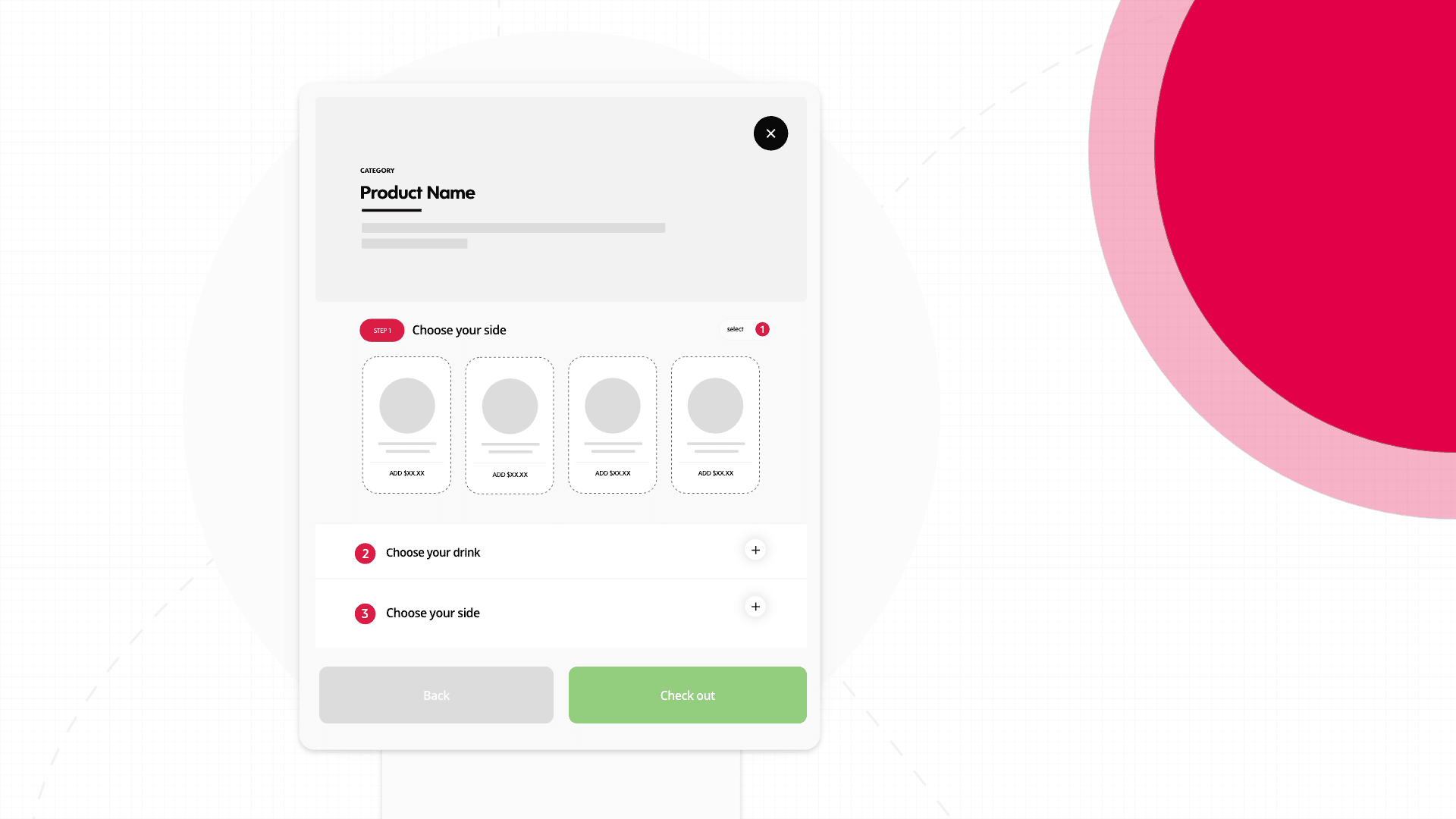Self-serving kiosks are quickly becoming a strategic part of the guest experience at quick-service restaurants (QSRs). Offering customers more control, quicker service, and better personalization, self-serving kiosks are one of the best ways to ensure a positive ordering experience while also maximizing profits.
With leading brands such as McDonald’s and Panera paving the way and demonstrating just how effective they can be as an engagement tool, it is no surprise that the demand for self-service kiosks is on the rise among QSRs around the world.
If your business is looking to increase customer spend and drive better workflow efficiency in-store, investing in a self-service kiosk may offer the best opportunity to meet your goals while also improving your guest experience.
What Are Self-ordering Kiosks?
Self-service kiosks are in-store digital touchpoints that allow customers to browse the menu, place their order, and pay – all through an interactive and easy-to-use interface.
Some examples of self-service kiosks that have proven successful in QSRs include:
- Freestanding ordering kiosks
- Countertop kiosks, which can be placed at tables
- Outdoor drive-thru kiosks
- Wall-mounted ordering kiosks
The best self-service kiosks should be sleek, modern, and high functioning, making them inviting and intuitive for customers to use. TASK President of North America John Laporte emphasizes just how important it is for businesses to invest in top-quality hardware when choosing a self-service kiosk.
“It should look like a giant iPad, very visually appealing. Self-service kiosks can really elevate the customer experience, but they have to first attract customers so that they will want to interact.”
Self-service kiosks are a digital tool that helps restaurants streamline their in-store workflow while providing customers with a personalized and engaging ordering experience.
What Is the Process of Ordering Through Them?
While every restaurant’s kiosk ordering interface should look and feel unique to its brand and its menu, most kiosks follow a general structure for guiding customers through the ordering process.
It starts with an approachable, easy-to-understand platform for browsing menu items, often separated into categories. As guests build their order, the system supports their selections by offering promotional offers and suggesting common add-ons or items often bought together.
Once the guest has confirmed their order and paid through the self-order kiosk, the restaurant’s integrated POS system automatically sends the information to the kitchen. When their food is ready, customers are alerted immediately.
Building the Restaurant of the Future
Learn what you need to invest in now to get ahead, and how your brand should approach digital transformation.
Why Are They Important for Restaurants?
Using self-service kiosks helps increase the efficiency of a restaurant, while also providing a more streamlined experience for the guest.
In fact, studies show that 65 percent of restaurant guests actually prefer using self-service kiosks compared to ordering at the counter. This is because kiosks help:
- Streamline food ordering
- Reduce ordering lines
- Increase order accuracy
- Speed up service and wait times
- Give customers total control over their experience
All these benefits also help increase efficiency for the restaurant. Businesses that implement self-order kiosks typically see significant increases in average guest spend, as there are better opportunities to offer promotions and extras. Margins also improve, as self-order kiosks allow output to increase without requiring extra staff at the front counter and better order accuracy means less time fixing errors behind the scenes.
QSR kiosks are growing in popularity alongside other integrated restaurant technology, evidenced by 48 percent of fast casual restaurants reporting they have turned more focus and resource into adding technology to their service.
How They Help Build Loyalty
“For many QSRs, self-service kiosks start as a pain avoidance tool – they help you reduce wait times, cut down on order lines, and enhance customer satisfaction” says John. “But what brands will find is that these kiosks actually open the door to so many loyalty and service benefits for both guests and businesses.”
While making a face-to-face connection is always going to be important in the hospitality industry, John says that great service in today’s market also needs to consider customer demands – and the top of that list is speed, personalized service, and convenience. Self-ordering kiosks help provide all three at the same time.
Restaurant kiosks make the entire process more efficient and less error-prone, helping create a frictionless experience from start to finish for guests. Loyalty develops over time, and every positive experience a customer has in a restaurant will encourage them to return again and again.
Kiosks are also designed to help easily link into your brand’s loyalty program and app. This makes it possible to present individual customers with personalized offers, suggestions for repeat orders, and a remembered payment method.
How Self-Service Kiosks Are Changing the QSR Game
Self-ordering kiosks are popular with customers of all ages, and they can help you cut down on lines, increase turnover, and hike up average customer spending.
How Can They Help Increase Revenue
Businesses often see two types of revenue increases after implementing self-service kiosks – an immediate uptick in order size as well as a long-term increase in repeat service and loyalty.
The real-time revenue benefits of using kiosks is larger spend with each order, as customers are proven to buy more when they order using this technology. Because kiosks also speed up the ordering process and put less pressure on the front counter, restaurants also see increased efficiency in throughput, order taking, and serving multiple customers at once. Self-ordering technology, therefore, reduces overhead costs, as fewer staff are needed to provide the same excellent level of service.
The bottom line is that customers will notice this heightened efficiency and the more personalized service, and want to return later down the line. Self-service kiosks usually drive more repeat business and larger lifetime spend, as well as better loyalty rates overall. This not only helps bring in more profit, but it also helps brands collect real-time customer data, helping them understand customer preferences and needs over time.
Adding Muscle to the Self-Ordering Game with integrated technology
The key with implementing new technology, whether it is digital signage or a brand-new loyalty app, is to move forward changes with a balanced, all-encompassing approach. John says, “The success of a self-service kiosk all depends on how it is deployed. Is it fun? Does it actually improve the overall guest experience? How are you tracking the metrics? And how does it fit into your entire digital ecosystem?”
From sleek hardware to menu interface design to tech integration, there is so much to consider before investing in self-service tools. That’s where quick-service restaurants need to rely on a technology partner that considers the full scope of your business and service goals.
Every new piece of technology, especially self-service kiosks, should feature real-time customization, comprehensive reporting capabilities, front-end control, and total kitchen and POS integration.
Businesses who are ready to take the next step in their guest journey and build stronger loyalty through superior ordering experiences should consider incorporating self-order kiosks at in-store restaurant locations. Offering better optimization, heightened efficiency, and great opportunities to maximize sales, the presence of a self-ordering kiosk will surely be an essential part of the hospitality experience for years to come.

